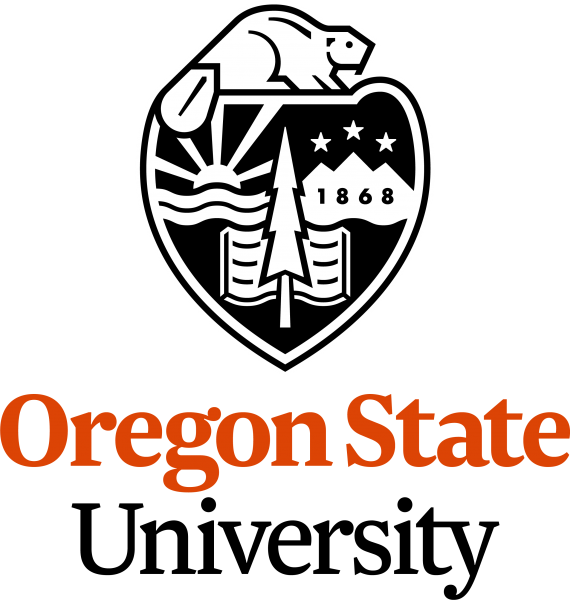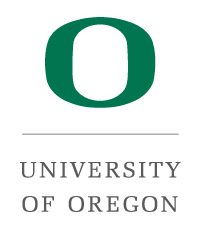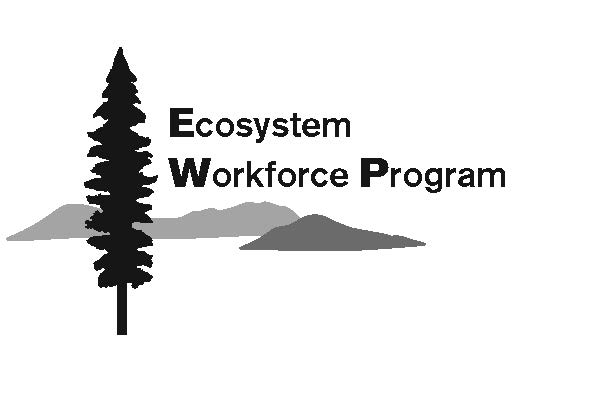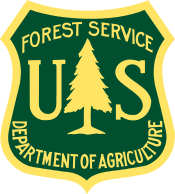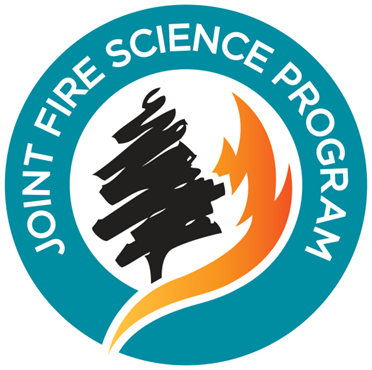Partner Feeds
Colville NF Renner Post-Fire BAER Specialist Report Released (2015 Colville NF Post-Fire BAER Burned Area Emergency Response)
Colville NF Renner Post-Fire BAER Specialist Report Released Attached as a PDF document to this article is the BAER Assessment Recreation Report which contains the BAER team analysis for the burned areas within the Renner Fire (see right side for the BAER Specialist Report in PDF format).
Colville NF Renner & Graves Mtn Post-Fire BAER Assessment Report Released (2015 Colville NF Post-Fire BAER Burned Area Emergency Response)
Colville NF Renner and Graves Mountain Post-Fire BAER Assessment Report Released The Colville National Forest received $11,465 for emergency land stabilization measures on federal lands burned by the Renner wildfire and $20,100 for federal lands burned by the Graves Mountain wildfire. The emergency treatments and activities are designed to decrease possible impacts to downstream values-at-risk from the burned area such as: human health and safety, road and trail infrastructure, water quality, soil productivity, critical cultural resources, and the spread of noxious weeds. NOTE: Attached as a PDF document to this article is the BAER Assessment Team's emergency stabilization report (see right side for the “Colville NF Renner-Graves Mtn Post-Fire BAER 2500-8 Report” in PDF format).
BAER Aerial Mulch Treatments Begin for the Stickpin Fire Area (2015 Colville NF Post-Fire BAER Burned Area Emergency Response)
BAER AERIAL MULCH TREATMENTS BEGIN FOR THE STICKPIN FIRE AREA The Colville National Forest’s Burned Area Emergency Response (BAER) team recently awarded an aerial mulch treatment contract to Rampart Helicopter Services to restore soil cover in critical high and moderate soil burn severity areas of the Stickpin Fire. The BAER mulch treatments will be applied to 20-60% slopes by rotary-wing aircraft to reduce the potential increase of sediment delivery on national forest system lands and protect other downstream values-at-risk. The mulch treatment was recommended by the Stickpin BAER assessment team to protect life and property, and provide for public safety. The BAER team anticipates post-fire downstream peak flows to increase due to reduced soil cover and hydrophobic soil conditions in Stickpin burned areas. Mulch will provide immediate ground cover and protection to the burned hillslopes from noxious weed invasion, improve soil productivity, and...
Colville NF Stickpin Post-Fire BAER Specialist Reports Released (2015 Colville NF Post-Fire BAER Burned Area Emergency Response)
Colville NF Stickpin Post-Fire BAER Specialist Reports Released Attached as PDF documents to this article are BAER Assessment Team Specialist Reports which contains their analysis for the burned areas within the Stickpin Fire (see right side for the BAER Specialist Reports in PDF format).
For Your Safety - Watch for Potential Flood Hazards (2015 Colville NF Post-Fire BAER Burned Area Emergency Response)
FOR YOUR SAFETY – WATCH FOR POTENTIAL FLOOD HAZARDS IT IS IMPORTANT THAT RESIDENTS AND VISITORS TAKE STEPS TO PROTECT THEMSELVES AND THEIR PROPERTY FROM POTENTIAL FLOODING AND DEBRIS FLOWS: Communities need to monitor local weather reports and public safety bulletins, local road closures, emergency notifications, weather alerts, follow local county and city advisories, and act accordingly. Use a “weather radio” or smart phone “weather app” that monitors “all hazards” alerts issued by the NOAA-National Weather Service (http://www.nws.noaa.gov/nwr/). Prepare for rainstorms by being prepared to evacuate if county or city emergency officials determine that flooding and debris flows are expected which could pose an increased threat to human life, safety, and property. Know and be alert to environmental signs of dangerous weather conditions and be prepared to take action that can save lives. Understand that...
BAER Information Brief - Types of Fire Severity Effects (2015 Colville NF Post-Fire BAER Burned Area Emergency Response)
BAER Information Brief Types of Fire Severity Effects There are several types of fire severity maps that you may see. Although they look different for the same fire, they may also all be accurate. This is because fire severity Is a measure of the fire effects on a specific resource such as soils, tree canopies, vegetation or wildlife habitat. Burned Area Emergency Response (BAER) maps are primarily measures of fire effects on soils. The following is a description of BAER fire severity mapping for soil burn severity levels. SOIL BURN SEVERITY RATING OVERVIEW: High Soil Burn Severity Rating (severe damage to the soils): deeply burned soils with high water repellent soils (tend to be places where the fire burned the forest canopy, ground cover, roots, and organic matter in the topsoil). Moderate Soil Burn Severity Rating: burned soil with moderate water repellent soils (much of the root, soil structure, and organic matter stayed intact and could help buffer the...
BAER Brief: Hazard Tree Safety (2015 Colville NF Post-Fire BAER Burned Area Emergency Response)
HAZARD TREE SAFETY _____________________________ WHAT IS A HAZARD TREE? The risk posed by hazard trees is often overlooked. A hazard tree is defined by: 1. Potential risk of failure A tree or part of a tree has a defect that makes it predisposed to failure. 2. Potential for damage A tree is located so that failure presents a threat to people or property. What is your Responsibility? Land management agencies cannot remove all hazard trees in the vast public lands, and typically, they only attempt to remove hazard trees in developed areas with high public use. Visitors must be aware of the dangers of hazard trees and take precautions, especially in backcountry settings. What is your Risk? Exposure time to hazard trees varies based on the amount of time visitors are in one location. MINIMAL Hikers spend relatively little time in one place (perhaps one minute). MODERATE Picnickers have more exposure (one...
Colville NF North Star Post-Fire BAER Specialist Reports Released (2015 Colville NF Post-Fire BAER Burned Area Emergency Response)
Colville NF North Star Post-Fire BAER Specialist Reports Released Attached as PDF documents to this article are BAER Assessment Team Specialist Reports which contains their analysis for the burned areas within the Stickpin Fire (see right side for the BAER Specialist Reports in PDF format).
Colville NF North Star Post-Fire BAER Assessment Report Released (2015 Colville NF Post-Fire BAER Burned Area Emergency Response)
Colville NF North Star Post-Fire BAER Assessment Report Released The Colville National Forest received $117,426 for emergency land stabilization measures on federal lands burned by the North Star wildfire. The emergency treatments and activities are designed to decrease possible impacts to downstream values-at-risk from the burned area such as: human health and safety, road and trail infrastructure, water quality, soil productivity, critical cultural resources, and the spread of noxious weeds. NOTE: Attached as a PDF document to this article is the BAER Assessment Team's emergency stabilization report (see right side for the “Colville NF North Star Post-Fire BAER 2500-8 Report” in PDF format).
Kaniksu Complex Post-Fire BAER Soil Burn Severity Maps Released (2015 Colville NF Post-Fire BAER Burned Area Emergency Response)
KANIKSU COMPLEX: TOWER, BALDY, & GREASE CREEK POST-FIRE BAER SOIL BURN SEVERITY MAPS RELEASED Burned Area Emergency Response (BAER) specialists recently completed their data gathering and verification field work for the 6,700 acres of the Kaniksu Complex (Tower, Baldy and Grease Creek Fires) that burned on the Colville National Forest (NF), 12,100 acres that burned on the Idaho Panhandle National Forests, and finalized Soil Burn Severity maps for each of the three Kaniksu Complex fires. Also burned in the Tower Fire were approximately 4,900 acres of private and 2,200 acres of Washington State lands. BAER soil burn severity mapping levels are 1) Unburned/Very Low, 2) Low, 3) Moderate, and 4) High. The maps show that approximately: 57% of the 24,700 acres analyzed by the BAER team within the fire perimeters of the Tower Fire are either unburned or have a low soil burn severity, while 34% sustained a moderate soil burn severity and 9% received a high soil burn...
Renner & Graves Mountain Post-Fire BAER Soil Burn Severity Maps Released (2015 Colville NF Post-Fire BAER Burned Area Emergency Response)
RENNER & GRAVES MOUNTAIN POST-FIRE BAER SOIL BURN SEVERITY MAPS RELEASED Burned Area Emergency Response (BAER) specialists recently completed their data gathering and verification field work in the Renner Fire and Graves Mountain Fire burn areas that burned on the Colville National Forest (NF), and finalized a Soil Burn Severity map. The Renner and Graves Mountain fires were part of the Kettle Complex of wildfires. BAER soil burn severity mapping levels are 1) Unburned/Very Low, 2) Low, 3) Moderate, and 4) High. The map shows that approximately 87% of the 13,800 acres analyzed by the BAER team within the fire perimeters of the Renner Fire are either unburned or have a low soil burn severity, while 13% sustained a moderate soil burn severity and less than 1% received a high soil burn severity; and 82% of the 8,600 acres analyzed by the BAER team within the fire perimeters of the Graves Mountain Fire are either unburned or have a low soil burn severity, while...
Colville NF North Star Post-Fire BAER Soil Burn Serverity Map Released (2015 Colville NF Post-Fire BAER Burned Area Emergency Response)
NORTH STAR POST-FIRE BAER SOIL BURN SEVERITY MAP RELEASED BAER specialists recently completed their data gathering and verification field work for the 18,000 acres of the North Star Fire that burned on the Colville National Forest (NF) and the 27,000 acres that burned on the Okanogan-Wenatchee National Forest, and finalized a Soil Burn Severity map. Soil Burn Severity mapping levels are 1) Unburned/Very Low, 2) Low, 3) Moderate, and 4) High. The map shows that approximately 58% of the 43,000 acres analyzed by the BAER team within the fire perimeters of the North Star Fire are either unburned or have a low soil burn severity, while 32% sustained a moderate soil burn severity and 10% received a high soil burn severity. The BAER assessment team used the map and field assessments to estimate potential impacts to human life, safety, and property from storm events and considered emergency stabilization options for those critical resources. BAER team leader...
Colville NF Post-Fire BAER Assessment & Implementation Efforts (2015 Colville NF Post-Fire BAER Burned Area Emergency Response)
COLVILLE NF POST-FIRE BAER ASSESSMENT & IMPLEMENTATION EFFORTS Before the 2015 wildfires burning on the Colville National Forest (NF) were fully contained, Burned Area Emergency Response (BAER) assessment teams were established by the forest to analyze post-fire conditions of the burned watersheds for the following wildfires: - Kettle Complex (Stickpin Fire, Renner Fire, and Graves Mountain Fire) - Northstar Fire (18,000 acres burned Colville NF lands)- Kaniksu Complex (Tower Fire, Grease Creek Fire, Baldy Fire) BAER assessments analyze post-fire effects on the burned soils and watersheds and determine whether there are potential emergency threats and impacts to potential downstream values-at-risk related to human life and safety, property and infrastructure such as roads, trails, and campgrounds, natural resources such as soil productivity, water quality and critical plant and wildlife habitat, and cultural resources. Wildfires can increase the risk...
BAER Limitations (2015 Colville NF Post-Fire BAER Burned Area Emergency Response)
Burned Area Emergency Response (BAER) Limitations While many wildfires cause minimal damage to the land and pose few threats to the land or people downstream, some fires result in damage that requires special efforts to reduce impacts afterwards. Loss of vegetation exposes soil to erosion; water run-off may increase and cause flooding, soil and rock may move downstream and damage property or fill reservoirs putting community water supplies and endangered species at-risk. The Burned Area Emergency Response (BAER) program is designed to identify and manage potential risks to resources on National Forest System lands and reduce these threats through appropriate emergency measures to protect human life and safety, property, and critical natural or cultural resources. BAER is an emergency program for stabilization work that involves time-critical activities to be completed before the first damaging storm event to meet program objectives. BAER Objectives: ...
Key Elements of the BAER Assessment (2015 Colville NF Post-Fire BAER Burned Area Emergency Response)
KEY ELEMENTS OF THE BAER ASSESSMENT Forest Service BAER assessment teams are established by Forest Supervisors before wildfires are fully contained. The teams coordinate and work with the USDA Natural Resources Conservation Service (NRCS), Bureau of Land Management (BLM), Fish & Wildlife Service (FWS), National Weather Service (NWS), local counties, California Department of Transportation, and other federal, state, and local agencies to strategically assess potential post-fire impacts to the watersheds burned from wildland fires. - The BAER assessment teams are evaluating watershed conditions to determine the level of potential risks to human life, safety, property, natural and cultural-heritage resources, and determine if there are appropriate and effective emergency stabilization measures that can be implemented on federal lands in a timely manner to reduce unacceptable risks from potential flooding and debris flow threats. - The BAER assessment team conducts field...
Stickpin Post-Fire BAER Assessment Report Summary (2015 Colville NF Post-Fire BAER Burned Area Emergency Response)
STICKPIN POST-FIRE BAER ASSESSMENT REPORT SUMMARY FS-2500-8 Burned-Area Report: Watershed Analysis, Condition, and Response The Stickpin Fire was reported on August 11, 2015, and burned about 53,950 acres along the Kettle Crest between Curlew and Orient communities. Hot, windy conditions combined with very dry fuels caused the fire to grow quickly. Stickpin Fire is the largest fire of the Kettle Complex which also includes the Renner Fire and Graves Mountain Fire. Approximately 48,500 acres burned on the Coleville National Forest. The remaining acres burned on state and private lands. A Forest Service (FS) Burned-Area Report, which included the BAER assessment team’s analysis of the burned areas within the Stickpin Fire and recommended emergency treatments, was recently submitted to the Pacific Northwest Region and its Washington Office by the Forest Supervisor for the Colville National Forest: - 8 sub-watersheds were analyzed and modeled to compare...
Stickpin Post-Fire BAER Soil Burn Severity Map Released (2015 Colville NF Post-Fire BAER Burned Area Emergency Response)
STICKPIN POST-FIRE BAER SOIL BURN SEVERITY MAP RELEASED BAER specialists recently completed their data gathering and verification field work in the Stickpin Fire burn areas and finalized a Soil Burn Severity map. Soil Burn Severity grid mapping codes are 1=Unburned/Very Low, 2=Low, 3=Moderate, and 4=High. The map shows that approximately 46% of the 53,950 acres analyzed by the BAER team within the fire perimeters of the Stickpin Fire are either unburned or have a low soil burn severity, while 24% sustained a moderate soil burn severity and 30% received a high soil burn severity. The BAER assessment team used the map and field assessments to estimate potential impacts to human life, safety, and property from storm events and considered emergency stabilization options for those critical resources. BAER team leader John Chatel stated, "The high severity burned watersheds in the Stickpin Fire have the potential for increased runoff, erosion, and debris flows...
Colville NF Stickpin Post-Fire BAER Assessment Report Released (2015 Colville NF Post-Fire BAER Burned Area Emergency Response)
Colville NF Stickpin Post-Fire BAER Assessment Report Released The Colville National Forest received $1,976,085 for emergency land stabilization measures on federal lands burned by the Stickpin lightning-caused wildfire. The emergency treatments and activities are designed to decrease possible impacts to downstream values-at-risk from the burned area such as: human health and safety, road and trail infrastructure, water quality, soil productivity, critical cultural resources, and the spread of noxious weeds. NOTE: Attached as a PDF document to this article is the BAER Assessment Team's emergency stabilization report (see right side for the “Colville NF Stickpin Post-Fire BAER 2500-8 Report” in PDF format).
Three Phases of Wildfire Recovery (2015 Colville NF Post-Fire BAER Burned Area Emergency Response)
Three Phases of Wildfire Recovery There are three phases of recovery following wildfires on federal lands: Fire Suppression Repair Emergency Stabilization-Burned Area Emergency Response (BAER) Long-Term Recovery and Restoration Fire Suppression Repair is a series of immediate post-fire actions taken to repair damages and minimize potential soil erosion and impacts resulting from fire suppression activities and usually begins before the fire is contained, and before the demobilization of an Incident Management Team. This work repairs the hand and dozer fire lines, roads, trails, staging areas, safety zones, and drop points used during fire suppression efforts. Emergency Stabilization-Burned Area Emergency Response (BAER) is a rapid assessment of burned watersheds by a BAER team to identify imminent post-wildfire threats to human life and safety, property, and critical natural or cultural resources on National Forest System lands and take immediate actions to...
BAER website back online (2015 Central Washington BAER Burned Area Emergency Response)
The CentralWashingtonFireRecovery.info website is back online and includes news and updates, resources, and BAER team assessment reports.
